NUS Singapore get Spontaneous Stephen Riady Center with Contemporary Architecture, by DP Architects is drawn by the dynamic qualities of this institution as a vibrant cluster of spaces, bringing diverse groups of student communities into this social melting pot. Considerable creative skills are exercised by the architect in shaping the spatial and programmatic content in this skewed site, where a datum spine of dual-stacked of pedestrian linkages and shared domains, generates key sense of movement and spontaneity with an array of functional plug-ins along with a multitude of breakout spaces.
The central forum of SRC NUS Singapore that acts as the fulcrum with major confluences of paths, is also well designed as a strategic node of bringing in daylight and effective natural ventilation into the internal spaces. The NUS Singapore project is undoubtedly successful in combining programmatic diversity with seamless connectivity, injecting a distinct sense of place in this destination for the student communities.
Architecture Of NUS Singapore And The Stephen Riady Center
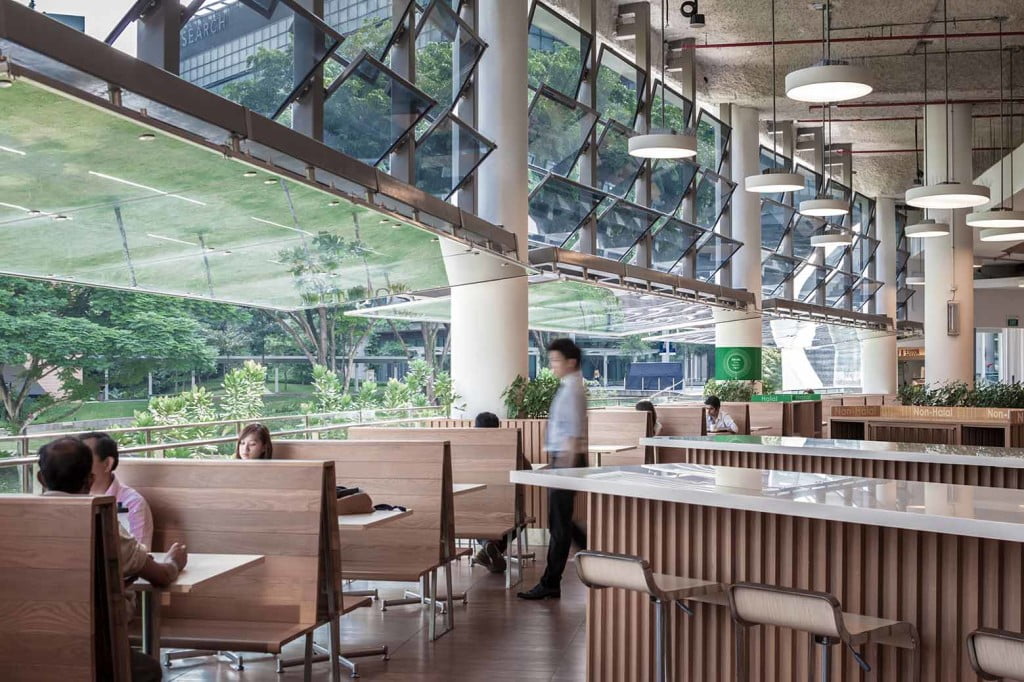
The Stephen Riady Centre is the penultimate parcel to be completed in NUS Singapore ’ landmark University Town project. Occupying the former Warren golf club, fronted by Clementi Road and Dover Road, University Town is intended to be the next generation of tertiary education in Singapore, taking reference from the residential colleges of the US and the UK.
The Stephen Riady Center is located on an angled site on the south west corner of the NUS Singapore campus and with frontages along the internal vehicular ring road and the central pedestrianized turfed area – the town green – the parcel presented an exciting challenge to the designers.
The brief presented by the client called for a landmark building which would house the most diverse group of users on the campus, with sports, education, dance and administration departments being housed together.
The NUS Singapore building also had to be tied into the extensive site-wide pedestrian circulation system with a centralized covered ‘forum’ space in the middle of the site.
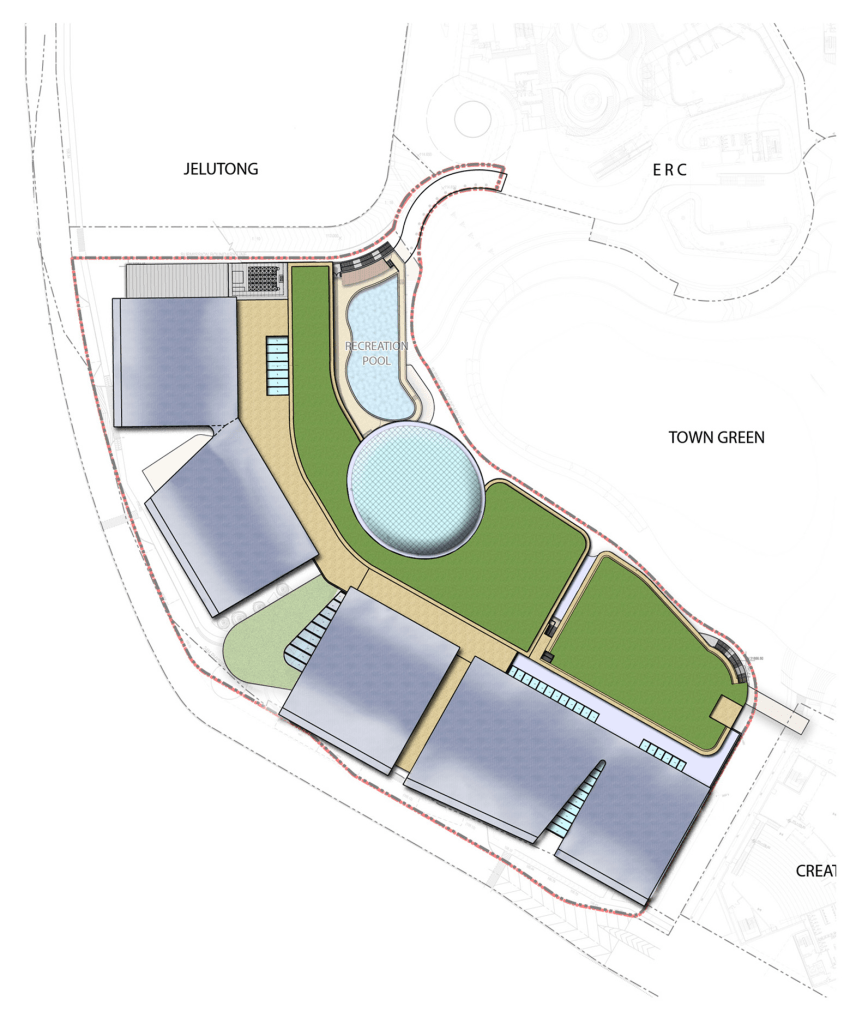
Project Fact File of NUS Singapore ‘s The Stephen Riady Center
Architects: DP Architects
Location: 21 Lower Kent Ridge Road, National University of Singapore, Singapore 119077
Project Team Members: Chin Thoe Chong, Hoo Chuen Piew, Goh Soh Mui, Emmanuel Sabido, Ramir Poyaoan, Hanafi Kasnan, Alexis Chan, Ahmad Iskandar, , Hamish Winstanley, Jeffrey Hans, Salazar Miranda, Rizal Hamdani, Randy Setiadinata, Yap Woon Hwee, Wendy Tan, John Tan, Theresia Widyasari, Monica Boenawan, Yap Shiow Hwa, Jael Tutay, Desera Puti, Asep Ajabar, Cheryl Koh, Carlito Sosito, Bonifacio Dela Cruz, Huang Jiahui, Jayson Manalo, Raymond Ong
Area: 23880.0 sqm
Year: 2012
Photographs: Marc Tey, Rory Daniel
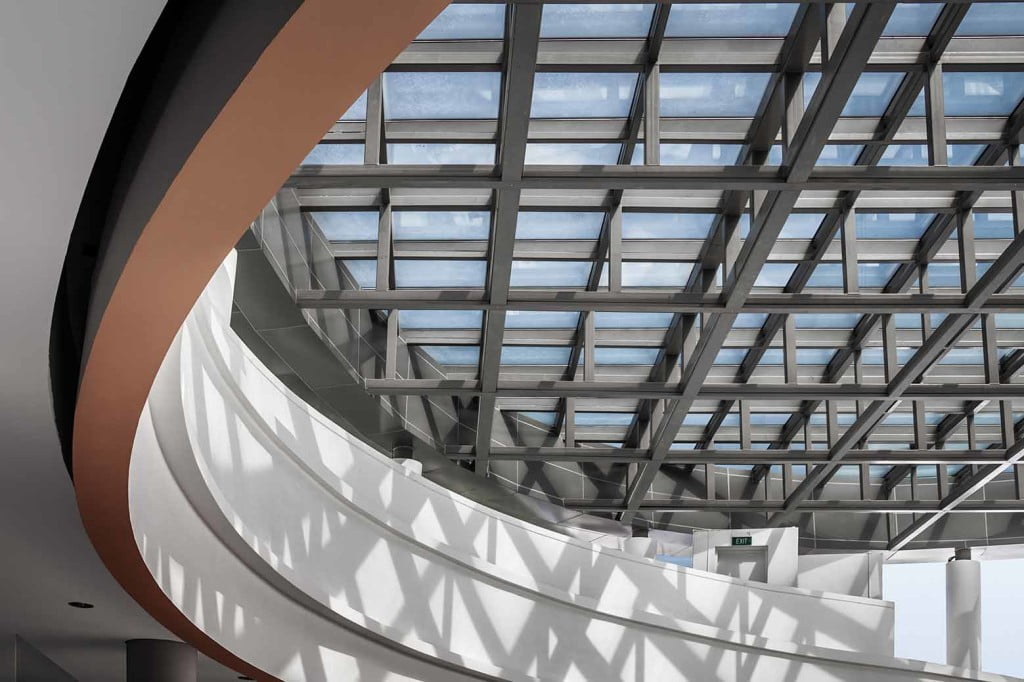
From the Desk of an Architect:
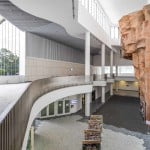
Creating a Spontaneous Learning Environment: The NUS Singapore ‘s S.R.Center is located on an angled site at the south-west corner of the National University of Singapore’s University Town.
The NUS Singapore ‘s S.R.Center faces the internal vehicular ring road and aims to establish a strong identity for the university while addressing the catchment from the central pedestrianized town green area.
Previously a golf club with several old trees, the nature of the site drove the evolution of the design proposal. Respectful of the scale of the town green, a simple three-storey volume was adopted.
The NUS Singapore ‘s S.R.Center offers an open, inviting campus passage on the ground plane, accessible by all. The central space has been carved out to create an area for congregation, or forum, that connects the various functions designed on the ground plane – a modern take on the ancient Roman place of gathering and discourse.
The internal space was further defined by two main circulation spines. At the intersection of the spines, the forum has been shaped to encourage meeting, interaction and discussion. It not only offers an area for temporary exhibitions, events and concerts, but also facilitates direct pedestrian connections with the town green.
The client’s brief called for a landmark building which would house the most diverse group of users on the campus together – sports, education, dance and administration departments.
With 21,600sqm of space for students, a plethora of facilities have been provided, including a student center, sports halls, theaters, offices, shops and a restaurant on the first story; a gymnasium, music practice rooms and classrooms on the second story and a swimming pool, music library and multipurpose hall on the third story.
DESIGN DERIVATION:
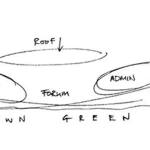
The architectural team started with the notion of ‘Pedagogy’ – learning no longer needs to be confined to classrooms and may even occur in open, incidental spaces.
To achieve this, the team started by looking at the lie of the land. The site sloped gently down to the west and connectivity to the neighboring buildings was at a higher level than the site’s base level – roughly equivalent to L2.
Rather than fight against this level difference, the team decided to embrace it, creating a stack of three interlinked ‘highways’ through the building. They allow seamless entry from all external levels into the building and easy dispersal of pedestrian traffic within the building itself through a series of generously proportioned atria.
The various functional elements of the building were plugged into this series of highways, along with a multitude of intimate breakout spaces generally located in close proximity to the atria. This allows students to get a view of activities happening across the building and encourages interaction.
This NUS Singapore design favors spontaneous learning in the classroom as well as in public spaces. The generous landings of the stairs have been shaped to foster meet-ups and consultations.
Natural air and light fill the exposed interior spaces while from the outside, visitors are treated to scenes of the NUS Singapore ‘s S.R.Center kept abuzz with movement and student activity.
Interior Spaces:
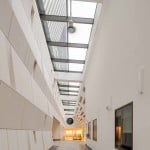
Another unique feature in this project is the undulating wall that serves as a dynamic backdrop for ceremonies – an interesting design combining light and shadow, colors and movement.
The wall generates different patterns as the sun moves through the day, creating a continually changing appearance. The materials of the interiors were also meticulously chosen to support and help embody the design idea.
For example, random-paving patterns were used for the flooring to reflect the dynamism of the space. Floor and ceiling treatments for the common spaces capitalist on natural elements, with flowing curves and a tapestry of hand-cut granite tiles.
This lends an outdoor feel to the public spaces, which seem to flow naturally into the landscape. Taking inspiration from the educational nature of the building and the texture of book spines placed on shelves, the wall treatments echo the geometry found behind those lines and patterns.
The roof has five large glazed skylights, and these generous openings serve as lungs that filter natural light beautifully into the space. NUS Singapore ‘s designers also provide direct connectivity with the outside world by showcasing the changing intensity and color of the sky.
Sustainable Design Approach:
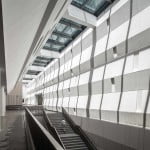
A blend of architectural and sustainable strategies was adopted to effectively reduce the impact on the site. Inspired by the longhouses of Sarawak in East Malaysia, the sloped aluminium roof with a substantial overhang provides shade to reduce solar loads.
The sports halls on the first floor also adopt a similar architectural and environmental strategy. Facing the west is a large roof with a long overhang that descends to a low level, warping downwards and doubling up as the facade.
The overhanging roof also ensures that the walkways are protected from heavy rainfall and hot tropical sunshine yet remain porous for ventilation. The overhang of the roof addresses the sun on the west side to reduce the strongest solar gain.
The glazed north and south facades provide views and allow light to stream into the NUS Singapore building, decreasing overall energy consumption. The building’s openings are aligned to prevailing wind directions to maximize natural airflow along the walkways.
55% of the areas in the building are not air-conditioned, substantially reducing the energy used for building operations.
Pictures of NUS Singapore:
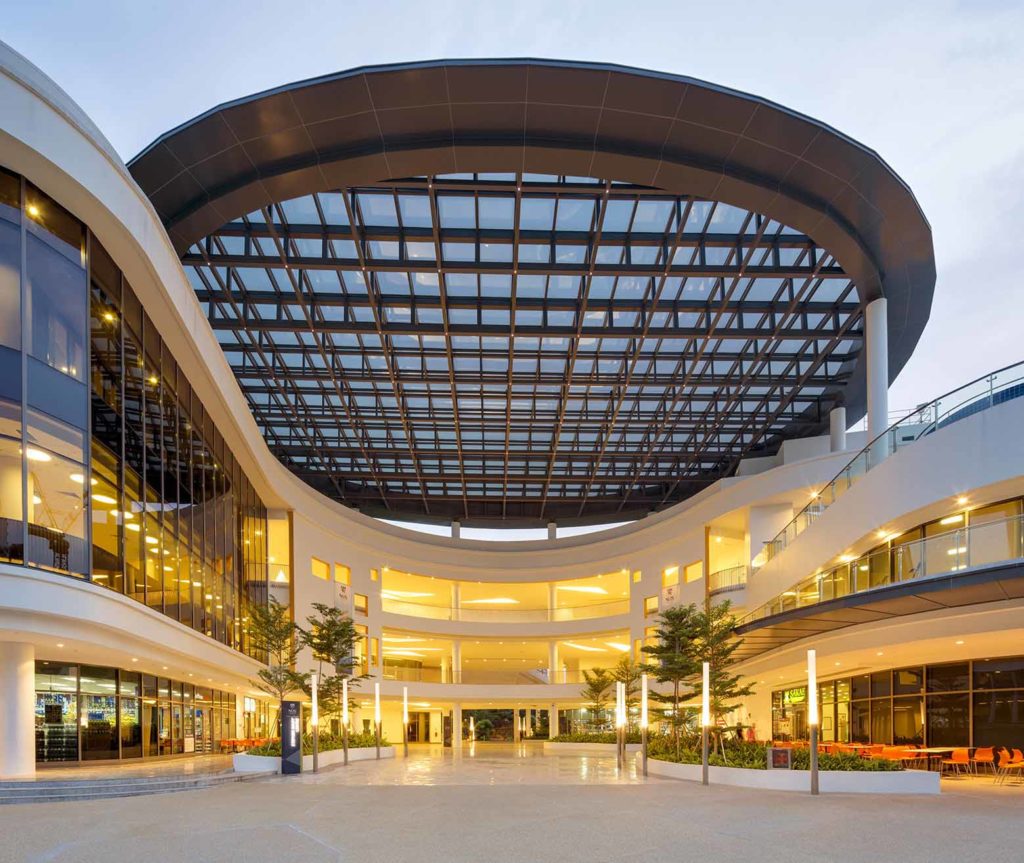

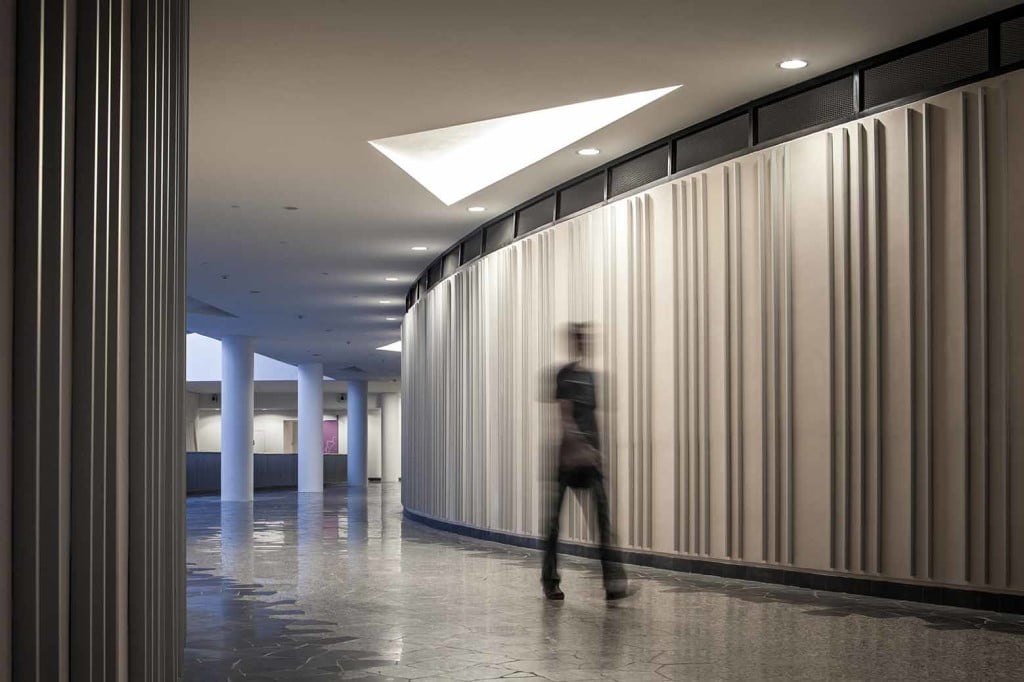
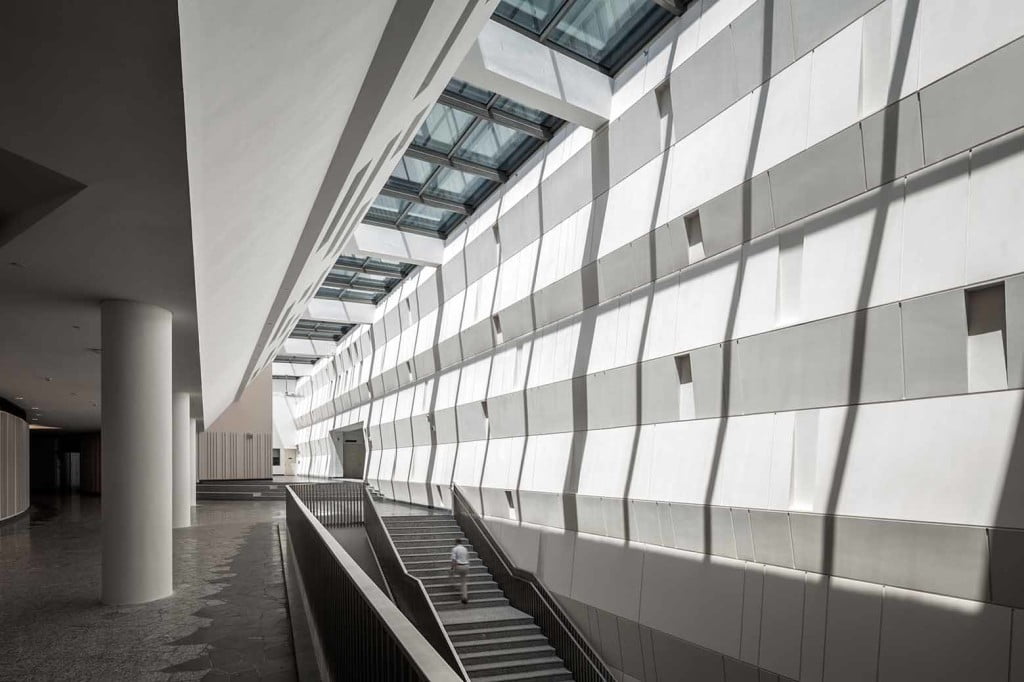
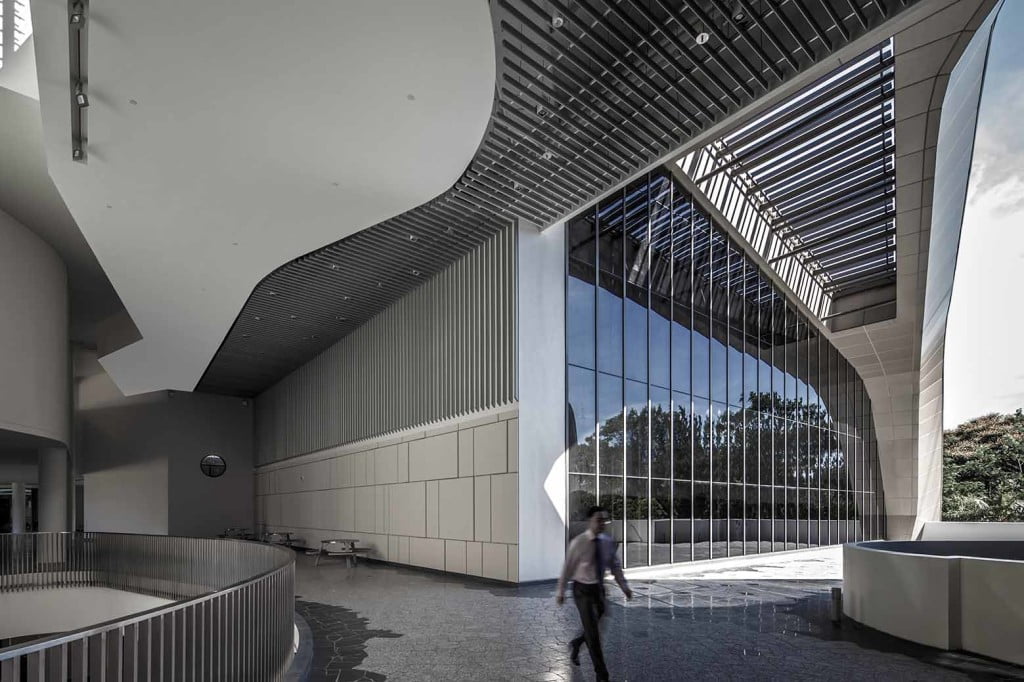
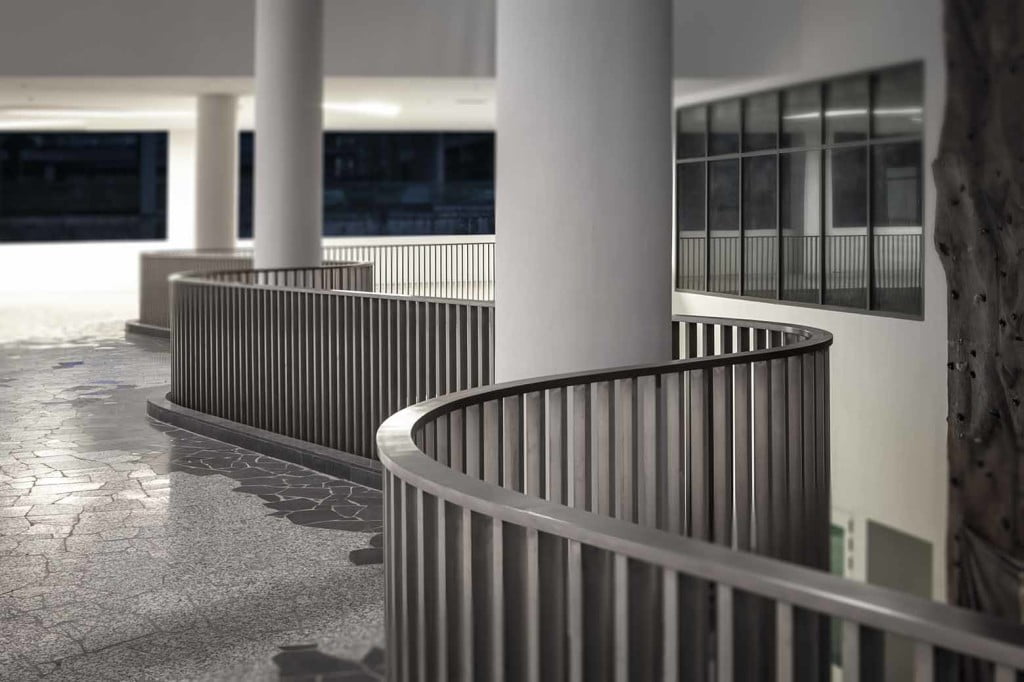
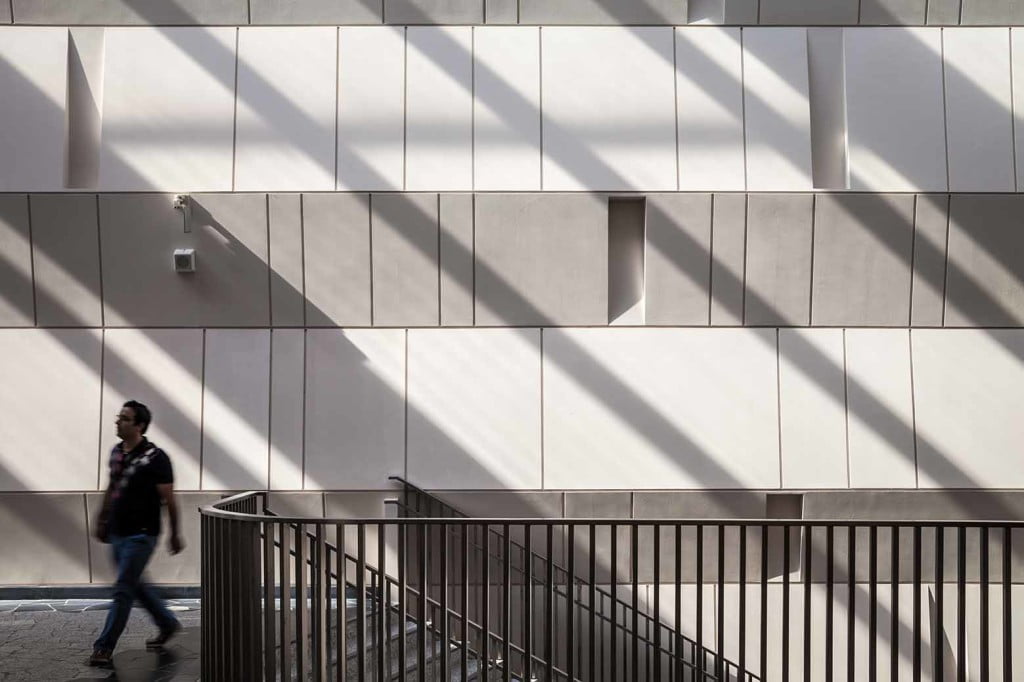
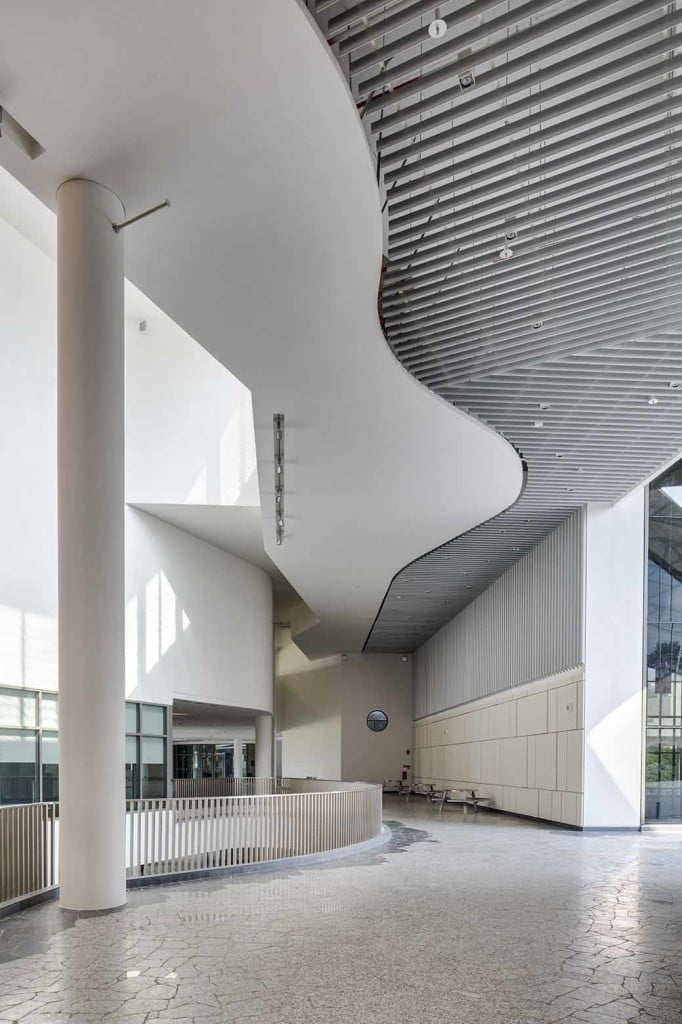
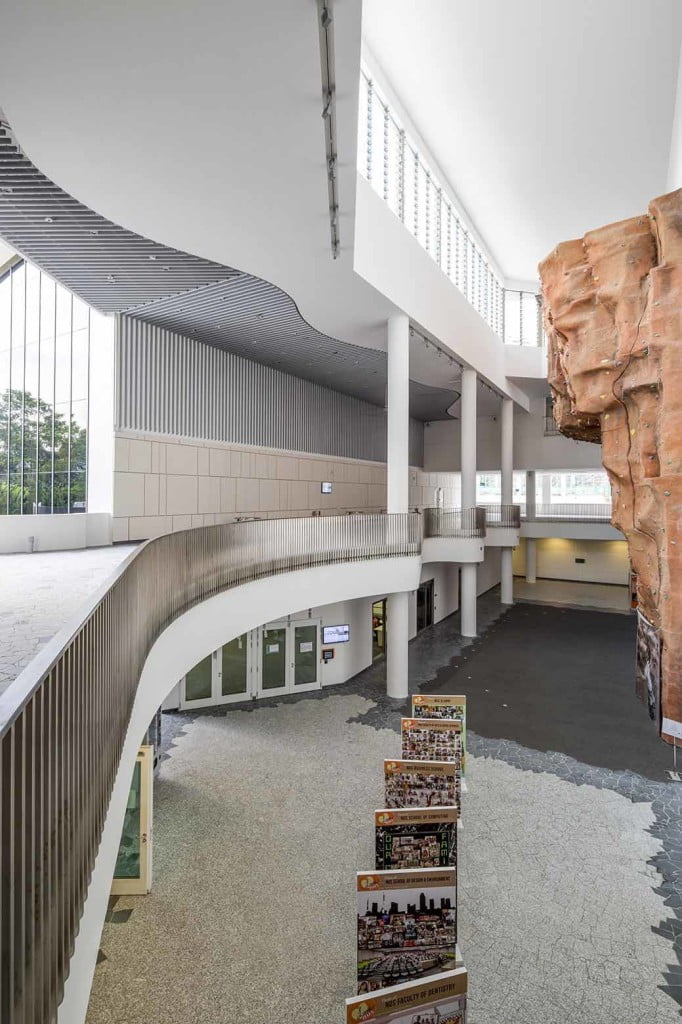
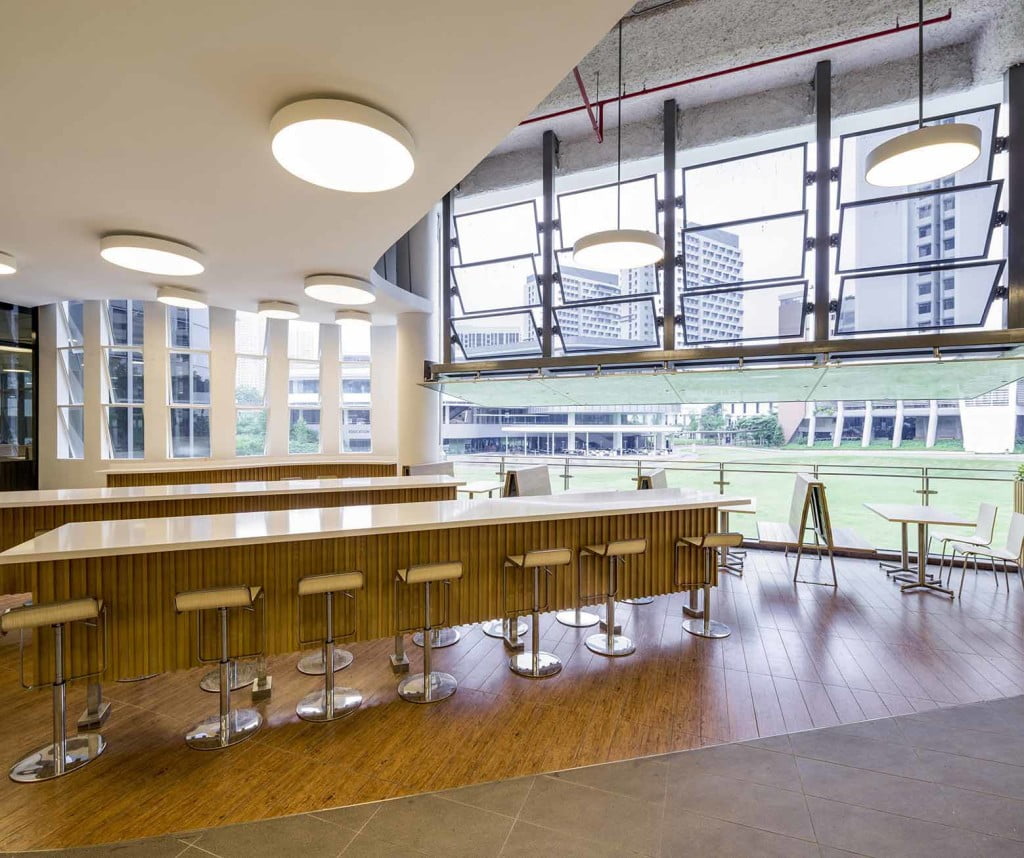
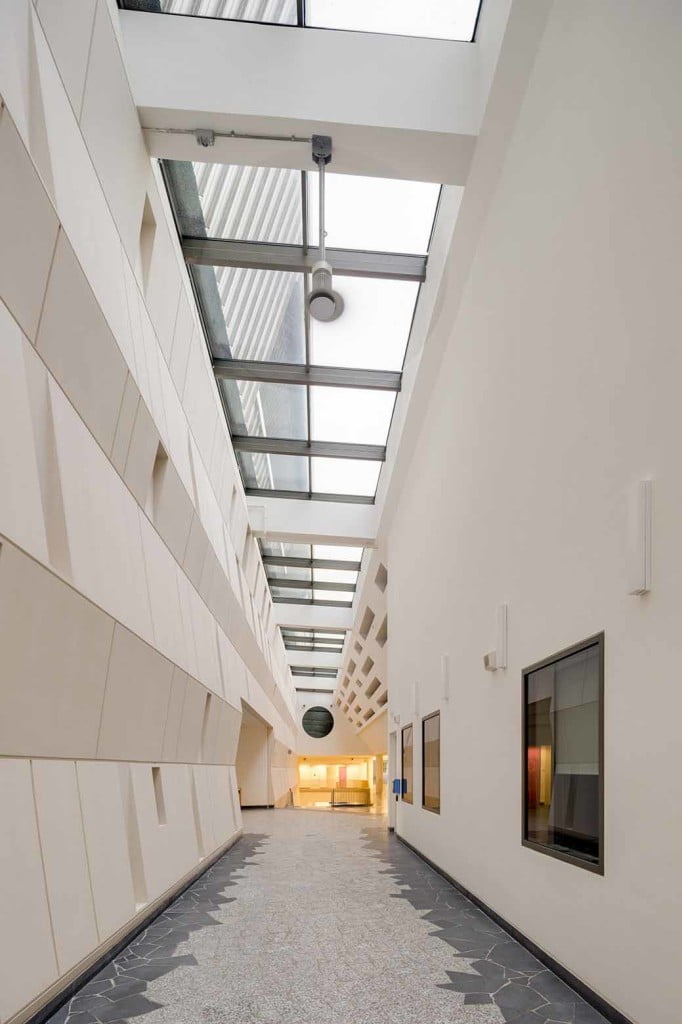
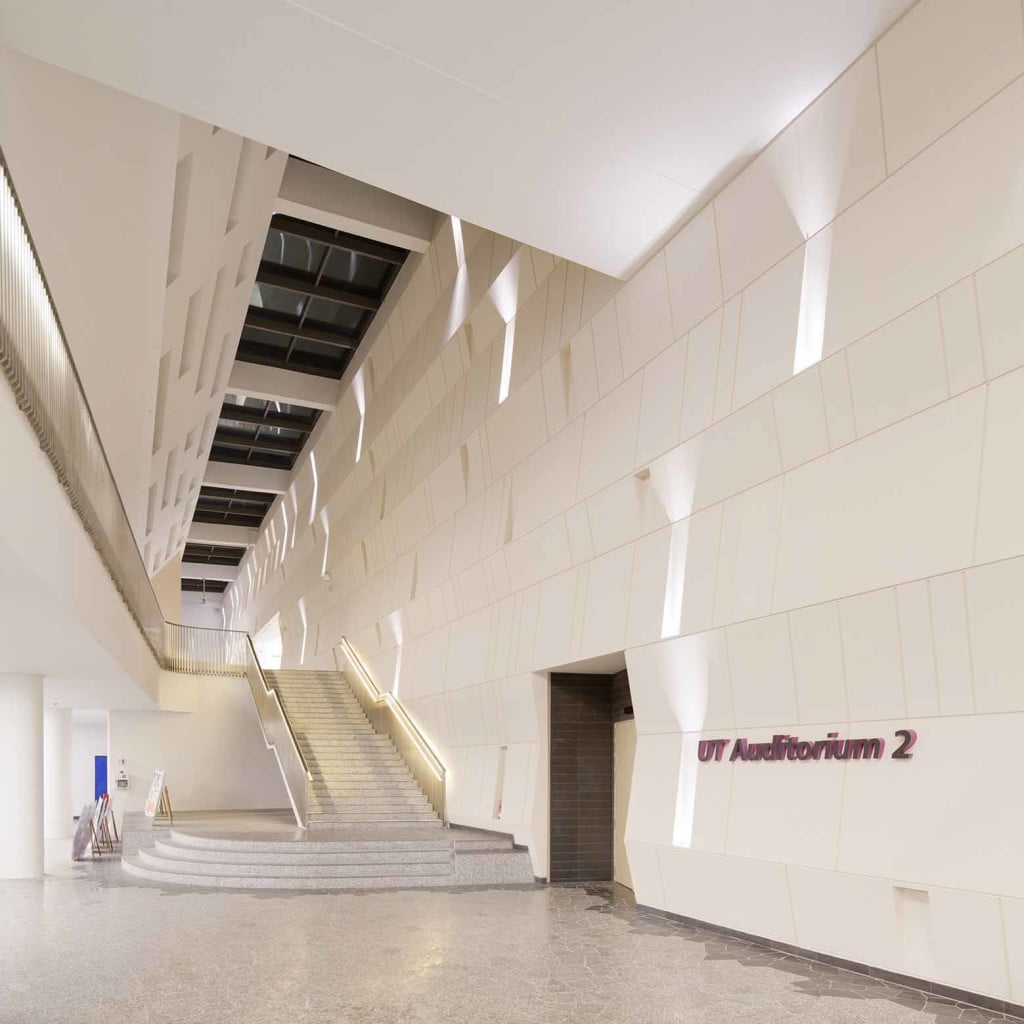
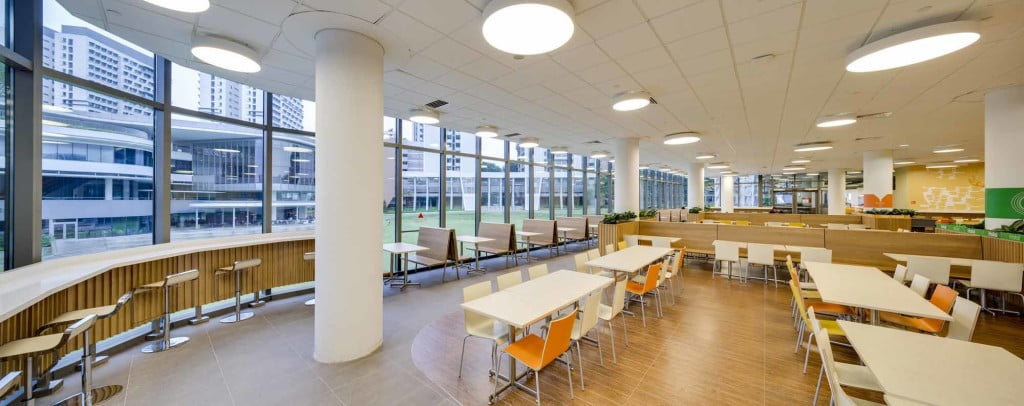
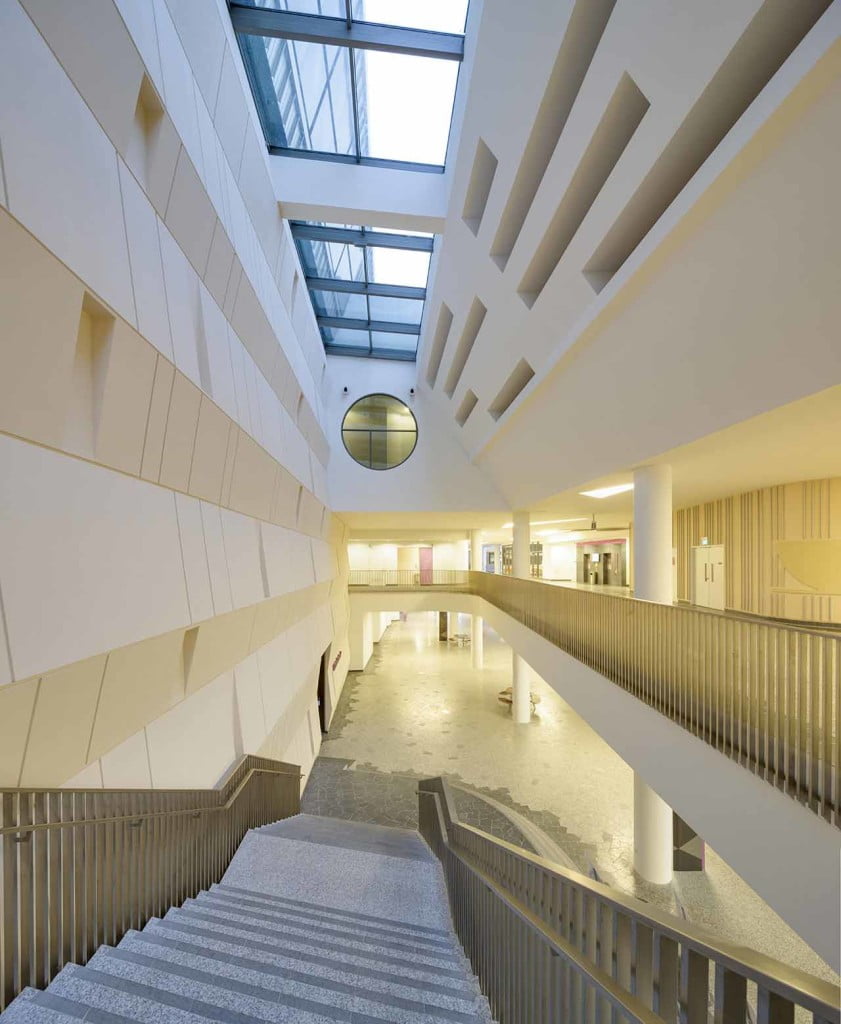
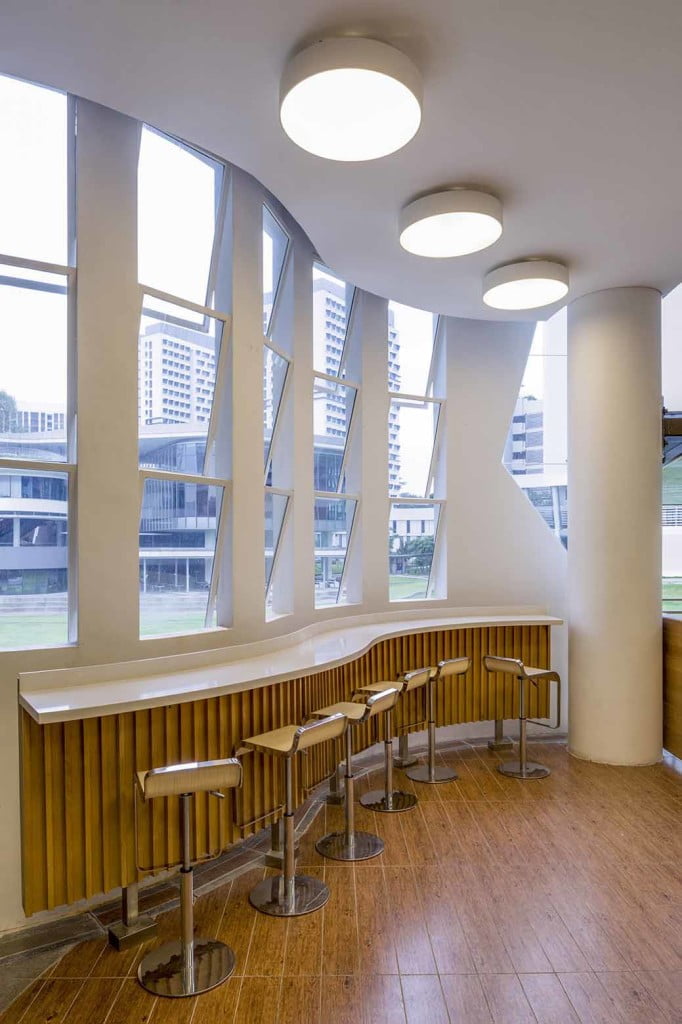
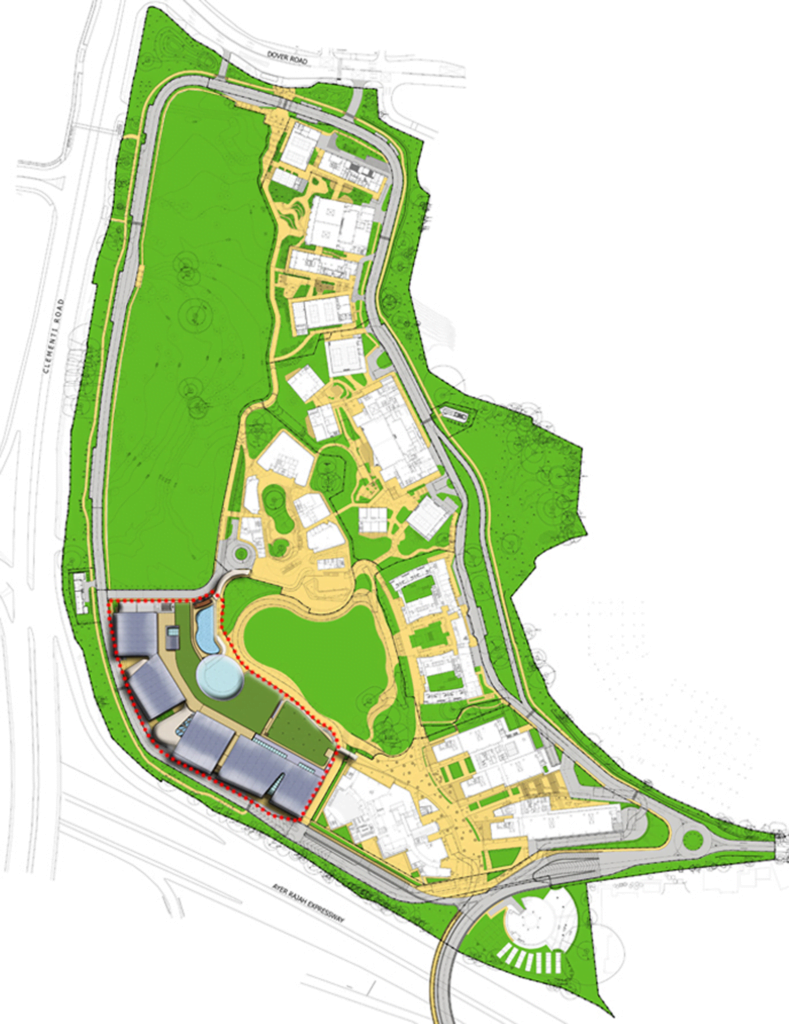
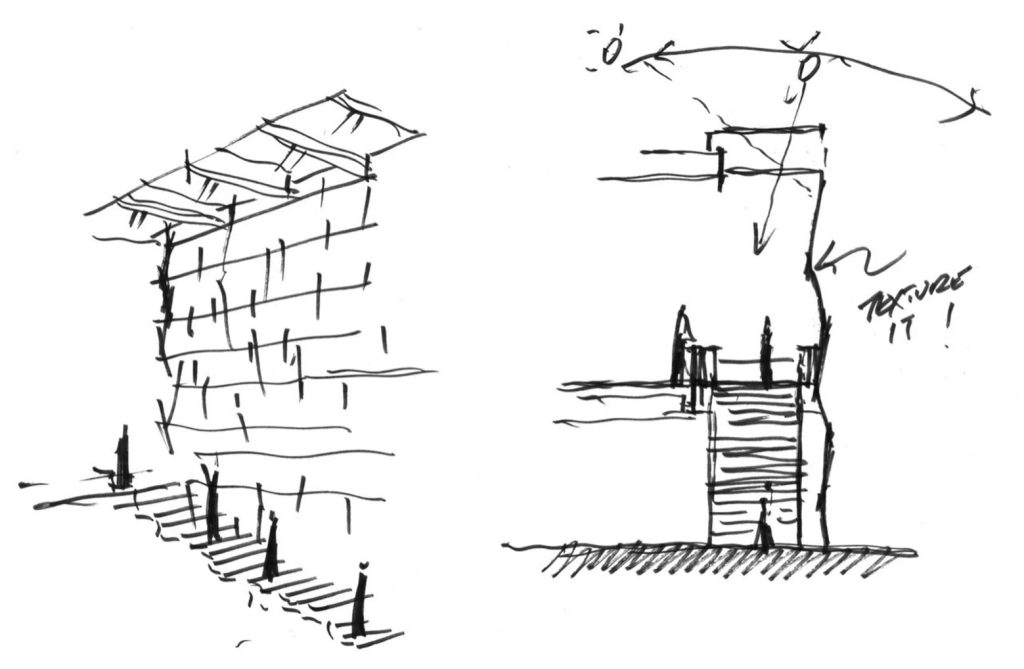

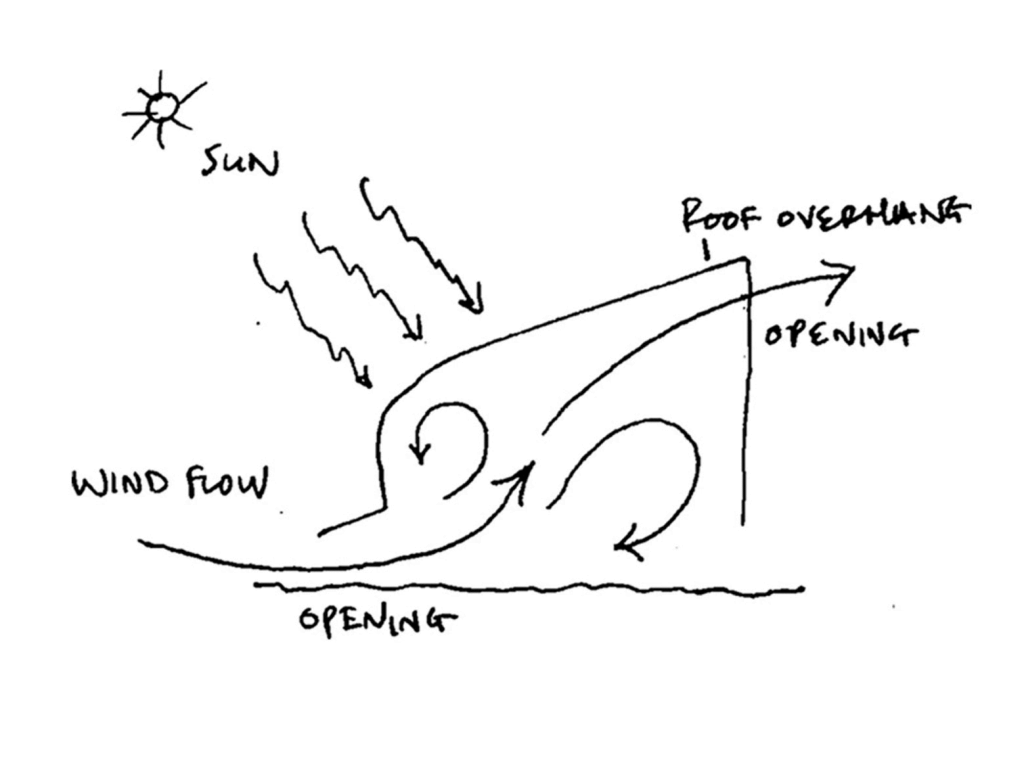
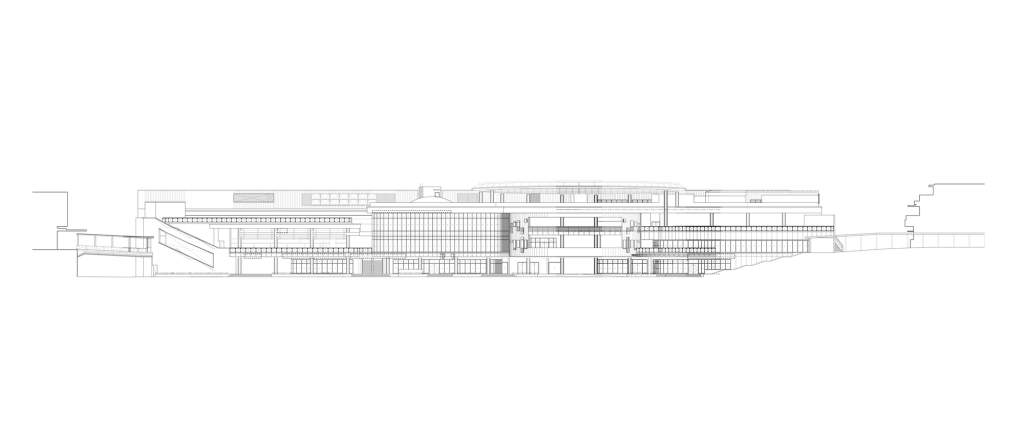
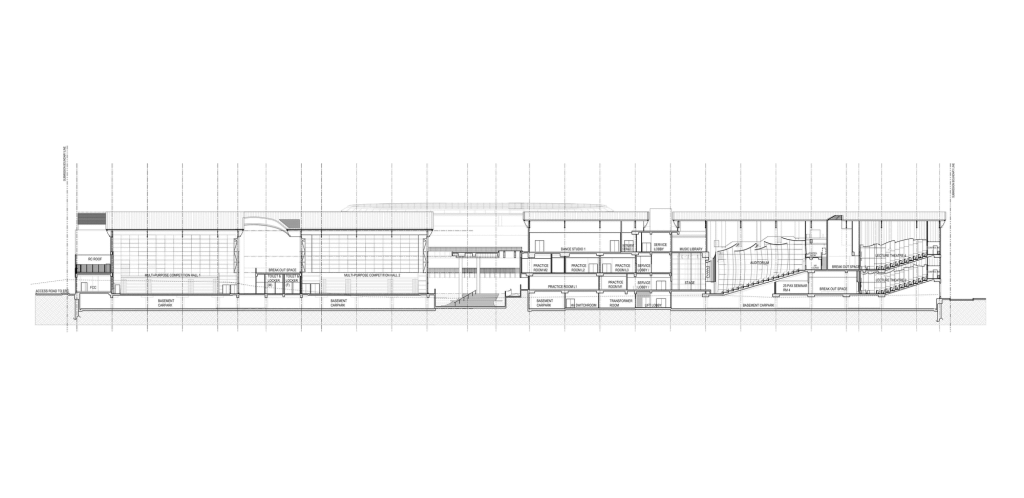

By utilizing spatial strategies, the NUS Singapore ‘s S.R.Center employs an architecture which strives to create a more spontaneous and intimate learning environment both responsive and sensitive to its environment. It offers students opportunities for discovery and interaction within a diverse array of dynamic spaces.

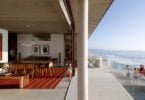



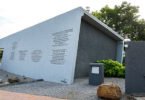

Leave a Comment
You must be logged in to post a comment.